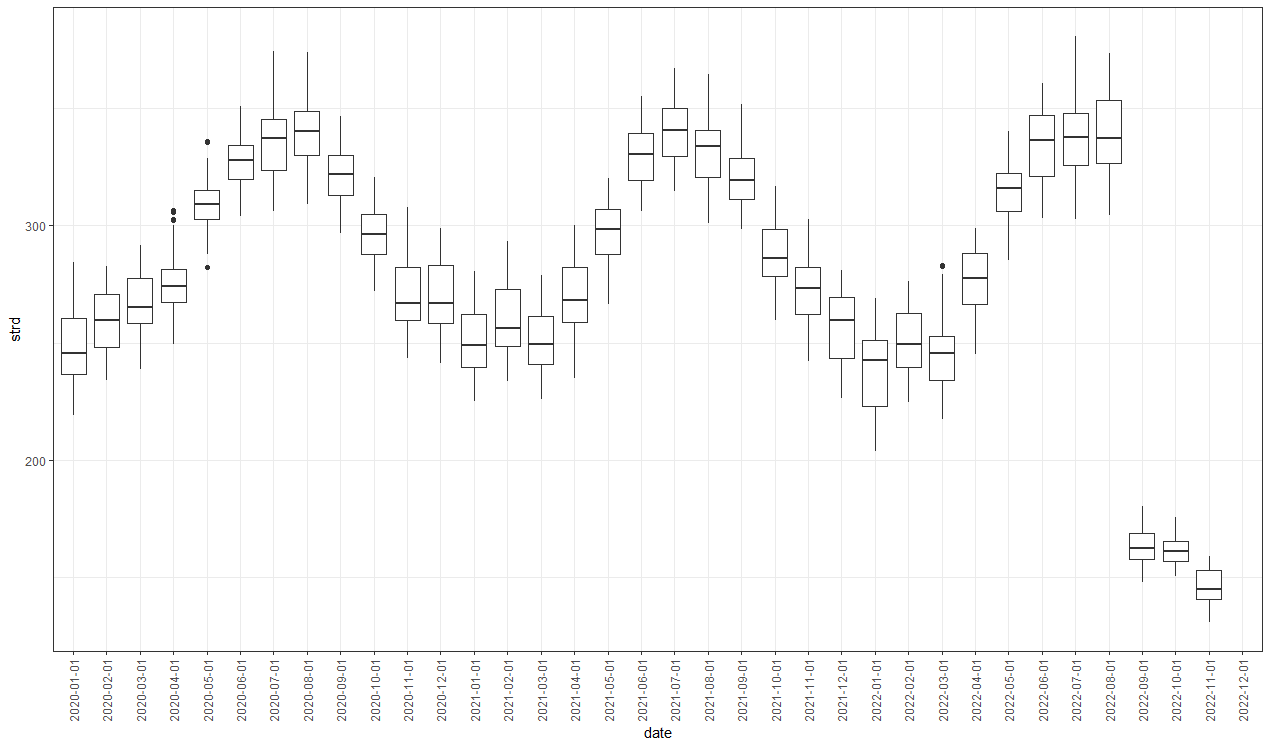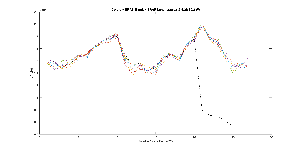I am currently analyzing ERA5-Land data over the Alps and noticed that from Sep 2022 onwards, the parameter "Surface Thermal Radiation downwards" has suspiciously low values (see attached plot). Is this a known issue?
Some additional infos:
- The boxplots show the monthly distribution of "strd" for ~40 regions in the Alps over which "strd" was averaged (mean). The plot shows only the past two years, but I am working with data since 1985 and this is the only occurence of this anomaly in the entire time series.
- The data was downloaded via C3S Climate Data Store on Jan 23, 2023, which, according to the website, was updated on Jan 17, 2023.
- I noticed this drop only in "strd" and not in any other variables. For example: "Surface solar radiation downwards" appears to be fine.
Hi Jonas, what is the region you were looking at (lat/lon bounding box)?
Thanks,
Kevin
Hi Kevin
the coordinates of the bounding box are
N: 49, W: 4, E: 17, S: 43
Thanks for looking into it,
Jonas
Thanks Jonas, I'll do some tests and see what the results are,
Kevin
Hi Jonas,
As we may need to investigate this in some detail, could i ask you to open a query with the Support Portal, please? once we have fully investigated the issue we can post the findings here on the forum,
Thanks,
Kevin
Sure, I have opened a ticket.
Hi Kevin, Jonas, we found exactly the same issue with ERA5-Land (black dashed line below). Has this problem been solved? I also opened a ticket
Hi,
Actually, we've seen similar issue before so chiming in... what could be happening is that the data downloaded contains two sets of data combined for a month - say ERA5Land and ERA5Land-T (esp. if you downloaded the data in NetCDF). I can't remember the exact code I used but when the data was combined using some reduce function, sometime they ended up being averaged with null values, so that data for these months essentially becomes half of what it should be, with null values being treated as zeros instead of nan.
Seeing that the lower values seem to be about half of what it should be, wondering if this might explain it?

